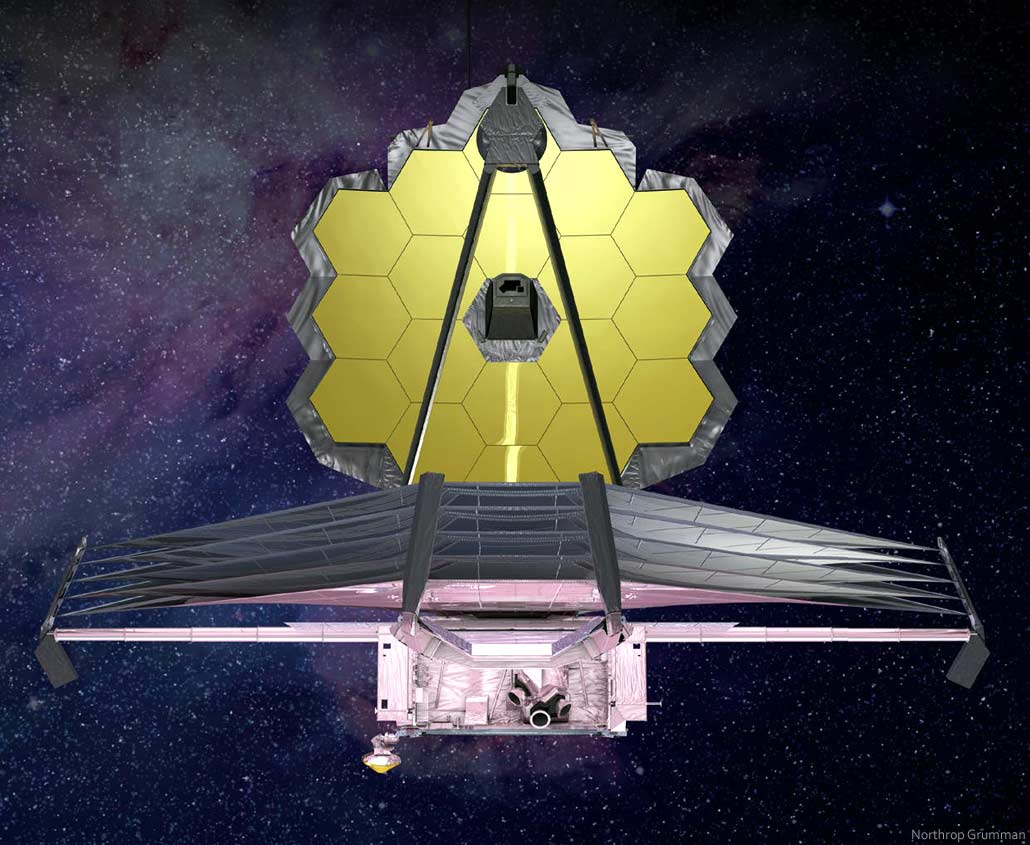The James Webb Space Telescope (JWST), hailed as humanity’s most powerful eye on the universe, has recently discovered black holes that defy conventional cosmological theories. Unveiled within exceptionally ancient galaxies, these giants arose just a few hundred million years after the Big Bang, an epoch when the universe was still in its infancy. Their sheer size and rapid growth pose profound challenges to our current understanding of black hole physics and cosmic evolution.
Since its deployment, the JWST has provided astronomers with an unprecedented look into the universe’s early moments. By observing galaxies over 13 billion light-years away, researchers are effectively peering back in time to the era when galaxies and stars first formed. Among the telescope’s many groundbreaking discoveries are black holes that far exceed the expected mass limits of such objects for that era.
Black holes, particularly supermassive ones, are colossal regions of spacetime where gravity is so intense that not even light can escape. These cosmic objects typically form over billions of years, growing slowly by accreting material from their surroundings. However, the recent discovery of these “impossible” black holes suggests that such structures could emerge rapidly under certain unknown conditions. The existence of supermassive black holes in the universe’s earliest stages has long been considered an anomaly by cosmologists.
New research indicates that these black holes might have developed through an unconventional process tied to an ultrarare form of dark matter. Unlike normal matter, dark matter does not interact with electromagnetic forces and is invisible to telescopes. Despite its mysterious nature, it constitutes most of the universe’s matter. Conventional cosmology posits that dark matter has crucially influenced the formation of galaxies and large-scale cosmic structures.
A theory gaining traction is that a variant of dark matter known as “self-interacting dark matter” might be responsible for supermassive black holes’ rapid formation. Unlike ordinary dark matter, self-interacting dark matter particles could collide and stick together, forming dense concentrations in the early universe. At a certain threshold, such clusters of dark matter could collapse directly into black holes without going through a prolonged star-forming phase.
This proposed mechanism could also explain how galaxies hosting these early black holes became so massive so quickly. Traditionally, star formation within a galaxy is thought to seed black holes, which grow slowly over time. However, the discovery of such massive black holes suggests that some formed independently, bypassing the need for extensive star formation.
If confirmed, this theory could have implications for solving one of modern astrophysics’ greatest enigmas: the origins of supermassive black holes. Observing black holes in diverse cosmological contexts has always indicated that their growth is intricately linked to their host galaxy’s evolution. The JWST’s findings, however, challenge that understanding.
To delve deeper, scientists are vigorously modeling scenarios using the latest astrophysical simulations. The data from the JWST will be crucial in verifying whether these early, gargantuan black holes exhibit characteristics consistent with a gravitational collapse driven by dark matter. Some researchers emphasize that these findings also demand alternative interpretations of how the universe evolved during its first few hundred million years.
While this narrative might seem esoteric, it underscores a broader point: the James Webb Space Telescope is rewriting what we thought we knew about the cosmos. By unlocking previously unobservable cosmic events, the observatory presents a more complex and nuanced picture of how the universe evolved over time.
As the James Webb Space Telescope continues its exploration of the deep universe, its discoveries could lead scientists to revise other longstanding physics assumptions. Observational astronomy is entering a golden age, propelled by technological advancements that enable humanity to probe questions that once seemed beyond our reach. Confirming the role of ultrarare dark matter in forming primordial black holes could be the next significant step in this scientific journey.
Moreover, these enigmatic black holes may provide broader applications in understanding the universe’s dark sectors. Unraveling their origins could refine theories on cosmic inflation, the nature of dark energy, and possibly offer indirect evidence for exotic particles predicted by physics theories extending beyond the Standard Model. Some suggest this discovery exemplifies how interconnected seemingly unrelated cosmic mysteries – from black hole formation to the properties of dark matter – truly are.
While cosmologists now face an array of challenging questions raised by these findings, one fact stands clear: the universe’s history is far more intricate than previously understood. As humanity advances its technological capabilities and theoretical tools, the frontiers of what is knowable will only continue to expand.
As JWST continues to send back data, scientists anticipate fresh breakthroughs in understanding other enigmatic phenomena, such as the nature of dark energy and the evolution of the large-scale cosmos. These revelations reaffirm the telescope’s value not only in observing the distant past but also in posing entirely new questions about humanity’s place in the universe.


